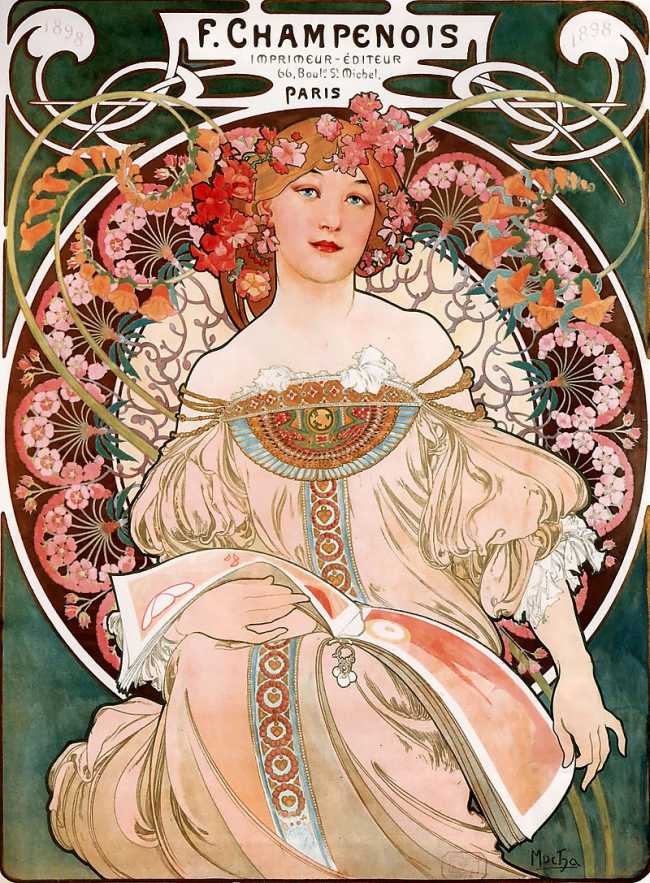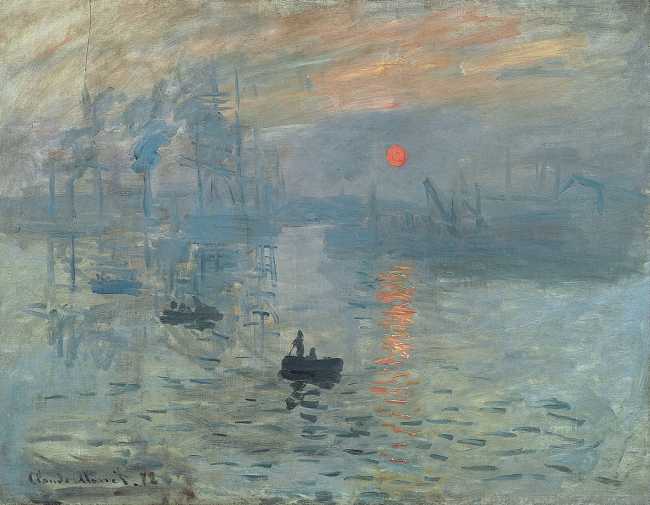Phone: (647) 894 7706
In our previous blog, we started a deep dive into the different art periods throughout western art history. Leaving off at Realism, we established that a good majority of artists at the time were concerned with perfecting technique and execution, and the oil painting classes of those times reflected those priorities as well.
Today, we enter more modern territory, starting with the Art Nouveau movement in the late 1800s. The modern period saw vast changes in how artists approached art. By and large, artists had already the reproduction of realistic imagery, and so there was a need to keep pushing the boundaries of art to keep it relevant.

Art Nouveau
Art Nouveau literally translates to “new art,” and the name itself typifies what the entire period was about. Gone were the days of realistic, virtuosic looking art – now, the emphasis was on creating something new, on showing all the different ways that art could be. They expanded the media of art, working with architecture, interior design, graphic design, jewelry, and more. The aesthetic of this time was brighter and more theatrical, looking to be more eye-catching and whimsical in an increasingly industrialized world.

Impressionism
Impressionistic art directly contrasted a lot of the values of Neo-classical and Baroque art, being the first iteration of the abstract movement. Claude Monet is perhaps the most famous impressionistic painter. You may have noticed that much of his art almost looks unfinished, as if he was simply sketching out his vision of a scene using his brush and paints. That is exactly the aesthetic of impressionistic art, looking to capture immediate impressions of moments rather than a realistic replication of it. As such, much of the art has a hazy, blurry quality about it. While oil painting classes still remained popular, many Impressionistic artists used water colours to help them achieve a softer, more ethereal look.

Post-Impressionism
As a direct response to Impressionism, Post-Impressionism retained the general attitude of Impressionism but sought to do certain things a little differently. For instance, while Impressionists emphasized natural lighting and colour, Post-Impressionists tended to do the opposite, all for expressive effect. There is far more symbolism within Post-Impressionistic art as well. One popular Post-Impressionist is Van Gogh, whose artworks continue to be reproduced in oil painting classes all over the world until today.

Fauvism
Fauvism introduced avant-garde sensibilities to the art world, using colour arbitrarily rather than naturally. Compositions were flat and much less realistic, with the emphasis being placed more on the impact of intense colours and bold brushwork.

Expressionism
Expressionism was all about the artist expressing their inner emotions through the forms and colours depicted in their paintings. During this time, Western artists sought to expand their views of how imagery conveys emotion, and thus frequently sought inspiration from foreign art styles and traditions.

Cubism
Cubist art is frequently thought of whenever the subject of abstract art is brought up. But as you can see, the road to increasingly abstract sensibilities started before this, with artists questioning themselves on the nature and purpose of art. Cubist artists took this questioning one step further and believed that art should not in fact seek to copy real life. The name “Cubism” comes from the geometric shapes used by artists to compose their subjects. The angular lines and shapes were perhaps the purest way of rejecting “natural” forms. This is perhaps one of the harder styles to tackle in oil painting classes, as many students have a hard time coming up with their own original Cubist forms.

Surrealism
Motivated and inspired by preceding art periods rejecting reality, Surrealist artists sought to purposefully depict scenes that defied logic, physics, and reason. They were very much influenced by current events around them, namely the World Wars and emergence of the theory of psychoanalysis. To them, rationalism was not the answer.

Abstract Expressionism
This is perhaps the art period that has attracted the most scrutiny and criticism. Whenever “modern art” is mentioned, people think of the blank canvases, haphazard paint splatters, and simplistic, solidly-coloured shapes of artists such as Mark Rothko and Jackson Pollock. These types of paintings were ridiculed for being overly-simplistic. However, the point is being missed – abstract expressionists were trying to redefine what art meant, and by painting supposedly simple scenes, they were able to overturn or at the very least, point out the flaws of conventionalism.

Op Art
Op Art is short for Optical Art. As you may have guessed, this was the art period of optical illusions, using shapes and colours to trick the eye into perceiving movement.

Pop Art
Pop art arose around the same time that advertising began to dominate our billboards and televisions. The idea was to use mundane, everyday objects and present them as art. It was a direct commentary on society, redefining the meaning of culture.

Contemporary Art
If you are currently taking oil painting classes in the hopes of becoming an artist, you would have to consider yourself a contemporary artist to some extent no matter the art style you adopt. Contemporary art is currently seeing a divergence in a plethora of art styles such as minimalism, street art, neo expressionism, digital art, and more. The sheer diversity of art currently out there makes it difficult to tell what art is going to look like in the future. We can only assume that technology and the mass availability of resources all over the world is going to have a big impact on how art is shaped.
Oil painting classes used to be absolutely necessary if one wanted to become an artist, because most artwork being created were oil paintings. However, modern movements such as pop art and abstract expressionism played with all kinds of media, popularizing printing, collaging, and more.
With that said, oil painting classes are still considered a crucial stepping stone. No matter the kind of artist you hope to become, it is important to first have a solid foundation. Oil painting classes can provide that, helping you master basic techniques while teaching you the history of art styles at the same time.
Indeed, there is a reason so many still seek out oil painting classes despite the diversity of media today. Check out our website to learn more about the oil painting classes we offer!